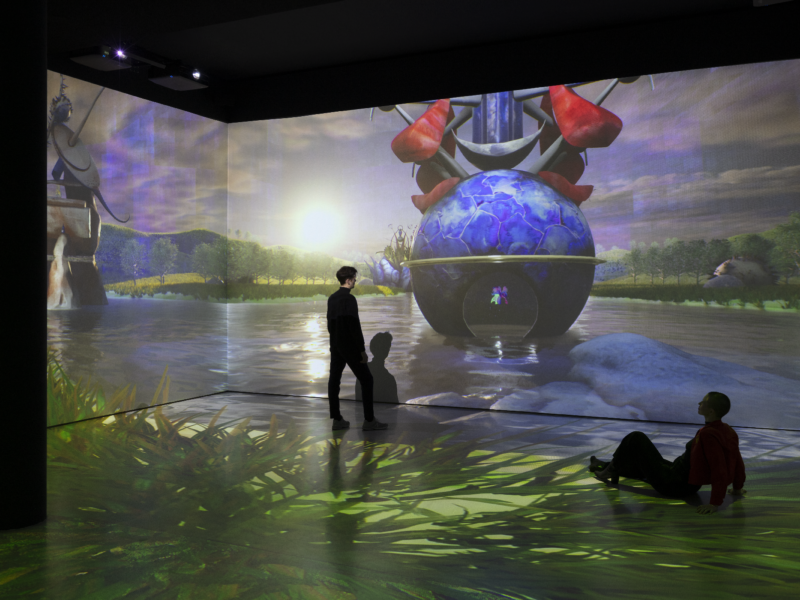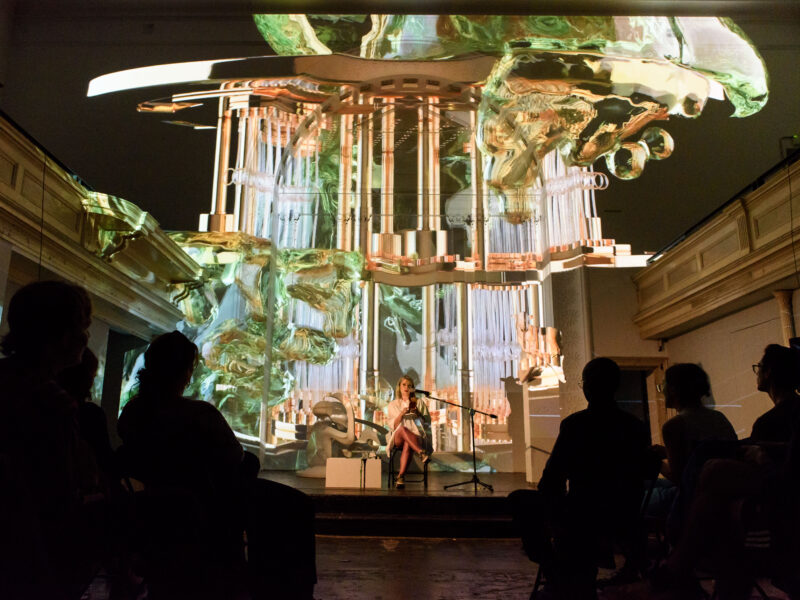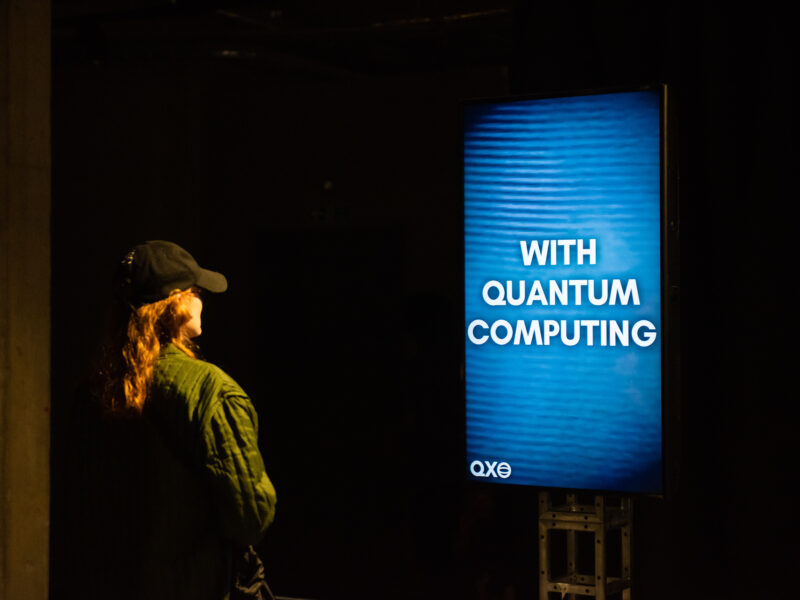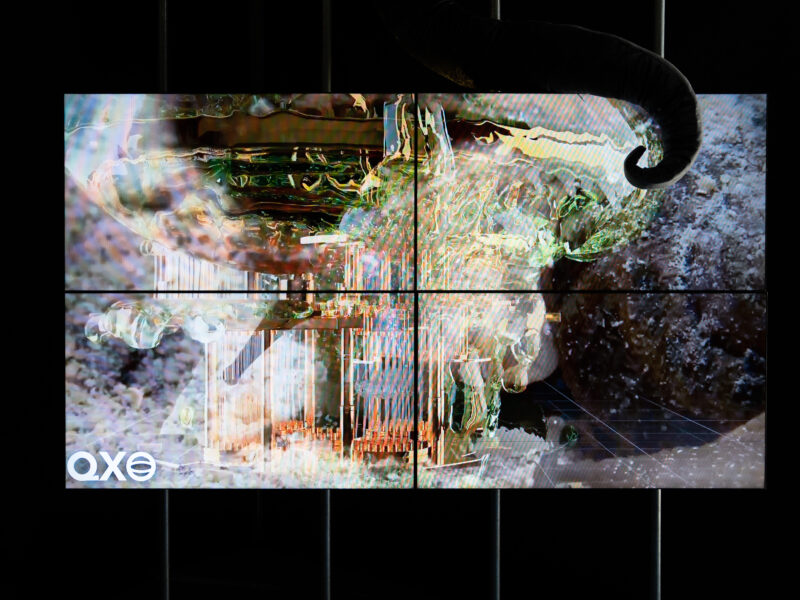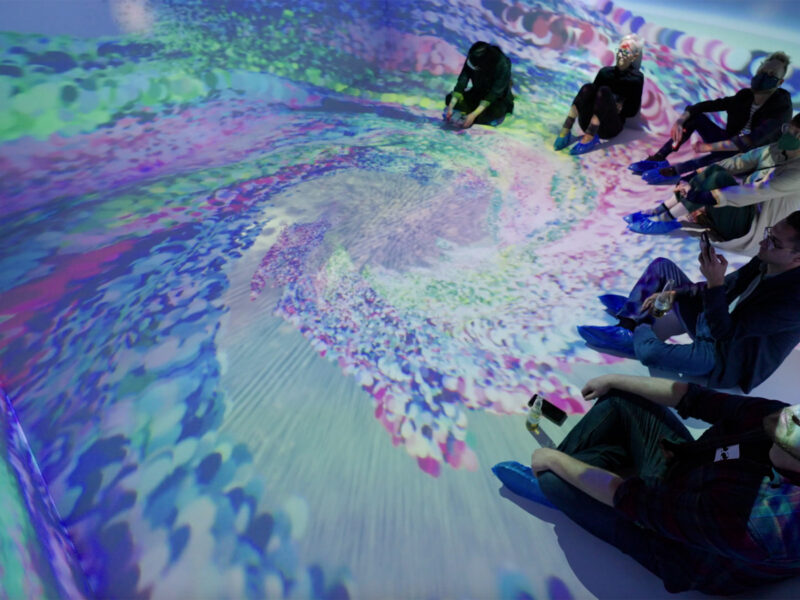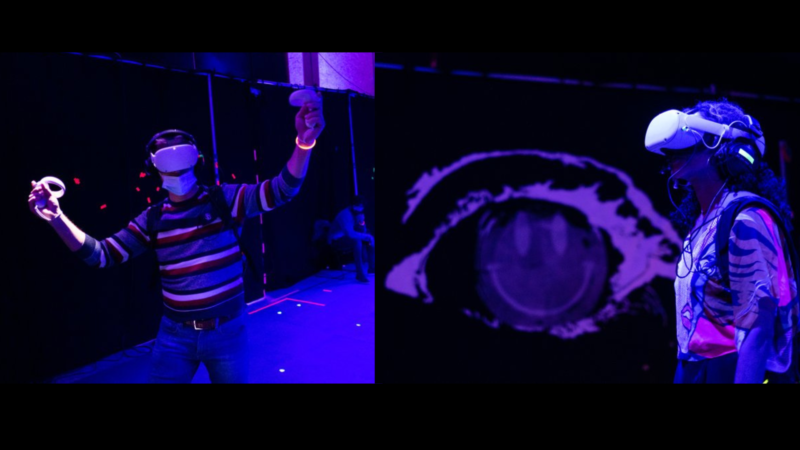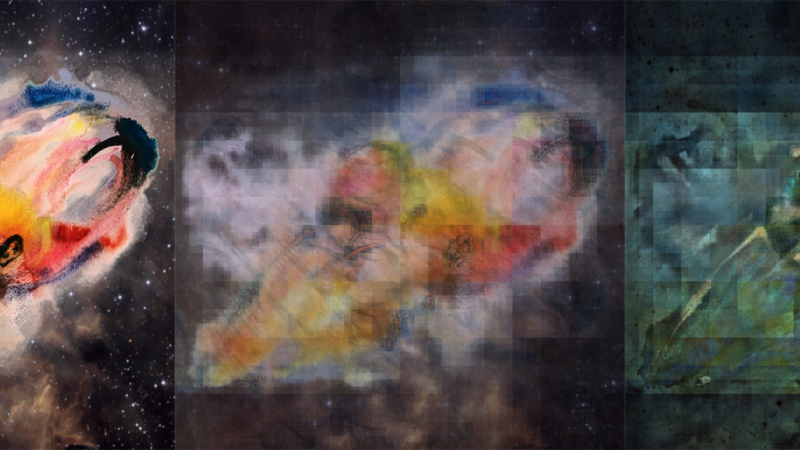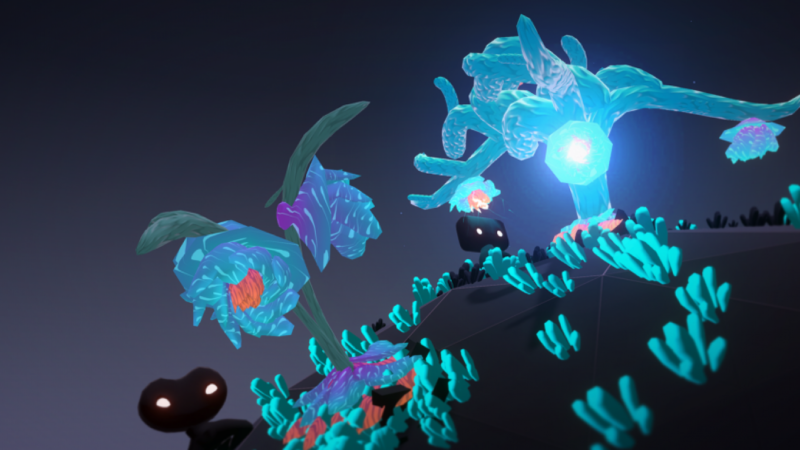The possibilities created by quantum computing
Libby Heaney is an artist with a PhD in quantum information science whose practice includes moving image works, performances, and participatory and interactive experiences. She’s also one of only a handful of artists working with the possibilities created by quantum computing. Libby previously wrote Programming the weird: A guide to quantum computing for artists and we asked her for her thoughts on the latest developments in AI, quantum computing and why artists and creatives should join the conversation.
The increasing impact of AI in art
Over the last five years, artists such as Gretchen Andrew, Connie Bakshi and many others have adopted artificial intelligence as a medium for their work, blending technology and art to explore what it means to be human in an era of artificial intelligence. And whilst neural networks and AI have been around since the 50s, their impact on the western world has been increasingly felt over the last decade. We can see this in the way that sophisticated algorithms are at work in assisting the financial outcomes for advertisers and giant tech companies. I feel that some governments and private contractors increasingly rely on algorithms and computer programs to make sensitive decisions around crime, benefits, housing entitlement, social services and child safety. These rigid systems are rigged with historical and cultural biases disproportionately affecting poor people and people of colour. Black people are more likely to be misidentified by facial recognition software, poorer people have more data collected about them and are more visible to computational systems than the middle classes who can afford private services. Algorithms around child safety conflate the history of previous generations of a family with how new parents will raise their child, giving them less chance of succeeding.
Artists such as Stephanie Dinkins, Hito Steryl, Trevor Paglan and others, including myself, have responded to these injustices in a number of ways and have proposed alternatives.
The impacts of the two areas of AI and quantum computing are intimately connected, albeit the underlying technologies function entirely differently. Quantum computing is still in its infancy, but is being intensely pursued by companies such as Google, IBM, Microsoft and others. When quantum computing is fully developed it will exponentially explode the possibilities of artificial intelligence and by extension, computational modes of surveillance and control.
Quantum computing is changing the world – but how?
Quantum computing will solve problems that can never be solved on digital computers. They will be able to run programs in a few minutes which would take the best digital computers 10,000 years to do, undoubtedly changing the world.
I’ve written previously about the ways in which quantum computing will revolutionise the way that internet searching works. Current search engines use indexing to make searching efficient. Without this indexing, efficient search (i.e. within a reasonable time) would be impossible. Quantum computers will change all of this and enable efficient search over any unindexed, unsorted databases. This data could even be states of our brain, particular emotional states or personal information such as sexual or political orientation, for instance. We are aware that tech companies already infer many details about us from personal data given over to social media networks and search engines.
Quantum computers will also solve the factorisation problem. This is hugely important, as the quantum factorisation algorithm will, in principle, be able to break all current RSA encryption used across the web and other digital networked systems. RSA encryption is used in emails, Whatsapp, and for securing websites. It works because it is a mathematical problem – one of factorisation – which cannot be solved on any digital computer. It’s a type of asymmetrical maths problem, you multiply together two large prime numbers to obtain a new larger number and it’s impossible for any digital computer to go from the larger number back into the prime numbers (which is known as factorisation). However future full-scale quantum computers will efficiently find the smaller prime numbers from the larger one.
Whoever develops quantum computers to the required scale first would hold a huge unparalleled advantage over everyone else: they would in principle be able to access all the world’s encrypted information. There are technologies such as quantum cryptography and quantum-resistant cryptography that can be used to protect data. However, it is important to remember that these methods are not perfect and not everyone will have access to them. Some researchers think that because quantum computers are not close to breaking encryption yet, there is no need to worry about these issues now, but I tend to disagree. It’s important to develop new and accessible languages around these technologies soon, so that a multitude of people can contribute to discussions about potential applications and ethics before it is too late. Companies are already harvesting classified RSA encrypted data now to decrypt using future quantum computers.
Images L-R: Q is for Climate (?), courtesy of NXT Museum; Ent-, Schering Stiftung Berlin, photo: Andrea Rossetti; slimeQore, Zabludowicz Collection photo: Richard Eaton
Building quantum computers
We are not yet able say when quantum computers will become large enough to run these programs. Because quantum computers function very differently compared to digital computers, they are very difficult to build as many different calculations run at once rather than sequentially like on digital computers. The difficulty in building quantum computers comes from noise that destroys quantum superpositions – even a tiny disturbance can cause the plurality of qubits to revert back to binary. It is very hard to scale up quantum computers and maintain the parallelization of calculations required. This relatively slow development gives society time to assess the risks, potentials and impacts of this powerful new technology.
Like AI, quantum computing has the power to transform our lives by assisting, for instance, in the development of new materials that may play a role in new types of energy storage or drug Future quantum computers will impact the arts, as they will likely cause exponential leaps in computational graphics. Quantum computers are naturally good at performing the same calculations that are currently used in GPUs (graphic cards) required to play computer games and render complex life-like scenes.
Any complex material will be better understood at the atomic and molecular level using quantum computing because these small systems are best described using quantum physics. This will likely lead to new materials for fabrication which will inevitably be used in the arts. Because of new microscopic understandings, these materials will have super well defined properties such as conductivity, reflectivity or be particularly malleable or strong. Already quantum technology is being used to develop new ultra-efficient high contrast TV screens.
The role of art and artists
Quantum physics, its related technologies and their impacts will work in ways that will challenge the imagination. They are also largely invisible. Art and cultural practitioners will be involved in communicating quantum advances and making visible invisible processes. After all making sense of complexity in new and engaging ways and telling stories around new tools is what culture does very well.
Quantum computing technologies and art will become a new area of creative exploration similar to how AI and art or Web3 and art have recently become mainstream. There is already a BBC TV drama called Devs about future quantum computers which is bringing some of quantum mechanics most interesting philosophical questions – like that of the existence of a multiverse – to engage audiences in exciting ways.
However, for me at least, it is worrying that the power of quantum computing is concentrated largely in the hands of the big technology companies and opaque start-ups. Given the immense resources and skills needed to develop and build quantum computers, it is hard for competitors to enter the field. Many prominent quantum scientists have moved from academia to business over the last 5 to 10 years, moving resources from public to private organisations. Big tech companies have track records with AI that align with surveillance capitalism, dubious ethics and other potentially biased applications suggesting that quantum computing might also be applied in this way. I hope I’m proven wrong.
Who has access to the technology?
Governments are investing heavily in quantum. The UK was the first country to announce its quantum strategy, and have recently announced a further £2.5bn investment in the sector. Other governments have invested heavily too. Government employees may not have the expertise to understand quantum computing and often rely on reports from academics linked to corporations. I understand that IBM charges universities (who usually receive academic discounts) over a million Euros per year for access to their ‘premium’ cloud-based quantum computer prototypes. If this is the cost for academics contributing to the field, when quantum computers still can’t really do anything new, what will the cost for business and governments be? Will start ups and lower income countries be able to afford access? Will governments need to step in to ensure access and training to those who want it to prevent widening inequalities?
There’s not much discussion around quantum computing outside of publishers like New Scientist, Wired, MIT’s Technology Review or the more specialised quantum websites like The Quantum Daily, Quantum Zeitgeist and Quanta. The IBM quantum team runs a blog about their latest developments and news. Artists and cultural institutions interested to learn more will currently rely on viewpoints of largely white male scientists or scientific journalists (many of whom were trained as scientists in the first place), although IBM and others do work hard to include other voices.
Until recently, there was very little discussion around the social, political and ethical impacts of this technology. John Martinis, Google’s former lead quantum computing researcher, recently argued that current ethical frameworks around existing technology can be applied to quantum tech, but I disagree. These frameworks are weak and selectively applied as the recent firing of two top AI ethicists from Google revealed. This has been followed by the resignation of Geoffrey Hinton – a pioneer in the development of AI – and Sam Altman, the Chief Executive of ChatGPT, recently told legislators in the US that government regulation of AI is ‘critical’ because of the potential risks it poses to humanity. Given their exponential power over digital computers including AI, I predict that the risks around future quantum computers will be even greater than the ones currently highlighted around AI.
Image credits L-R: Max Colson, Tom Gibbs, Kyal Cundall
Artists need to join in and disrupt the discussion around quantum computing
All of this is precisely why people from outside quantum computing should join the discussions now. That includes people working in and around the arts and humanities. While I don’t want to instrumentalise art, we are able to speculate and create meaning in a richer, freer, more emotive way compared to scientists. While some scientists see art as something ‘nice, but not serious’, they may believe the arts cannot impact a field like quantum computing. However, we should note that artists have driven the recent surge of interest in NFTs. As a result, discussions around Co2 emissions from various blockchain technologies have come to the fore.
In my art practice, I work with quantum computing systems. However, I’m not particularly interested in the fact that quantum computers run certain algorithms quicker. Rather, I’m interested in revealing the non-binary-ness and parallel-nature of the quantum world. As a counter to the more dystopian predictions outlined above, when working directly with quantum computers one is able to programme the weird. The plurality and non-binary-ness of quantum computing intersects with current concerns in contemporary art. One of my favourite authors, Karen Barad, speaks about quantum physics in relation to post-humanism, ecologies and responsibility. I’ve been experimenting with quantum computers as a material basis for actualising and moving beyond their ideas. Recently I’ve developed a generative quantum video editing algorithm where up to 32 different pieces of footage are all present at the same time and become more or less visible depending relational data from quantum entanglement (generated on one of IBMs quantum computers). Unlike traditional video editing with it’s hard cuts and transitions, which typically give only one authorial viewpoint at any instance, quantum video editing values all viewpoints and voices simmultaneously. If quantum video editing results from just a small (5 qubit) quantum computer, when quantum computers are fully developed, they will see and predict things that we cannot even imagine. This is another reason why artists may want to take notice now.
Want to try? Here’s some tools to use
To get going, artists currently have three choices: Microsoft, Amazon or IBM. I would recommend IBM as their smaller quantum computers are freely available. Google’s quantum systems are all proprietary. Amazon has developed its own coding language for quantum computers. Artists and creatives can access IBMs smaller quantum computers online here. IBM has visual tools for quantum programming and some example Jupyter Notebooks where some knowledge of Python will be essential. QPlayLearn are working on tools for creatives as well as education around quantum technologies.
- Microsoft guide for quantum computing is here
- Even the popular online learning platform Udemy have a course for learning quantum computing from scratch.
- Professor Bob Coecke has a book where readers can learn the intricacies of quantum computing through diagrams instead of mathematics.
- Libby’s Instagram account includes weekly videos unpacking quantum computing and quantum computing and art for lay audiences.
About the author
Dr Libby Heaney
Libby Heaney is a British artist and quantum physicist known for her pioneering work on AI and quantum computing. She works on the impact of future technologies and is widely known to be the first artist to use quantum computing as a functioning artistic medium.
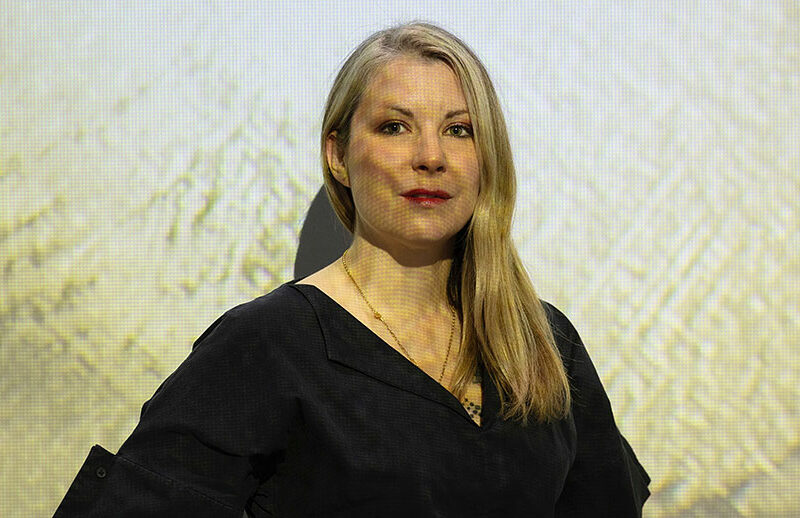
How useful was this resource?


